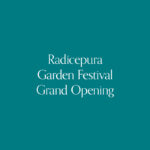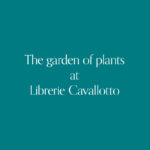
“Productive Gardens” it was the theme of the 2019 edition: an event that can gather art, culture, and environment protection as constituent elements of an extraordinary territory.
“Productive Gardens” it was the theme of the 2019 edition: an event that can gather art, culture, and environment protection as constituent elements of an extraordinary territory. The Alcinoo garden, described by Homer, is one of the most significant archetypes of gardens, from which beauty, usefulness (fruits and vegetables production) and eternal spring were in harmony. These aims are often portrayed in traditional Mediterranean gardens, they are still nowadays of a cogent newness.
The Homer description of Alcinoo palace’s garden, a space surrounded by pear trees, pomegranates, apple trees, very sweet figs and luxuriant olive trees. On one hand the charm of the garden was made by the presence of utilitarian plants, fruit trees above all but also vegetables, and to the fact that the production would never be interrupted “Pears age on pear, Apples on apples, bunces on bunces, figs on figs”. European travelers, arriving on the occasion of the grand Mediterranean countries tour, would find on the fertile countryside and on the production plants even in winter (citrus above all) the immanent image of such a garden.
The theme of the productive garden, useful, is still widely present: a green space, producing fruits, flowers, biodiversity, smells, emotions, oxygen, relaxation, fun, regenerating energy is an archetype that never fails. For this reason, the theme announced for the Garden Festival 2019 edition is the productive garden one, which knows how to conciliate for the third millennium human being, in an original way, the ancestral needs for usefulness along with the new aesthetic demands of modern society.
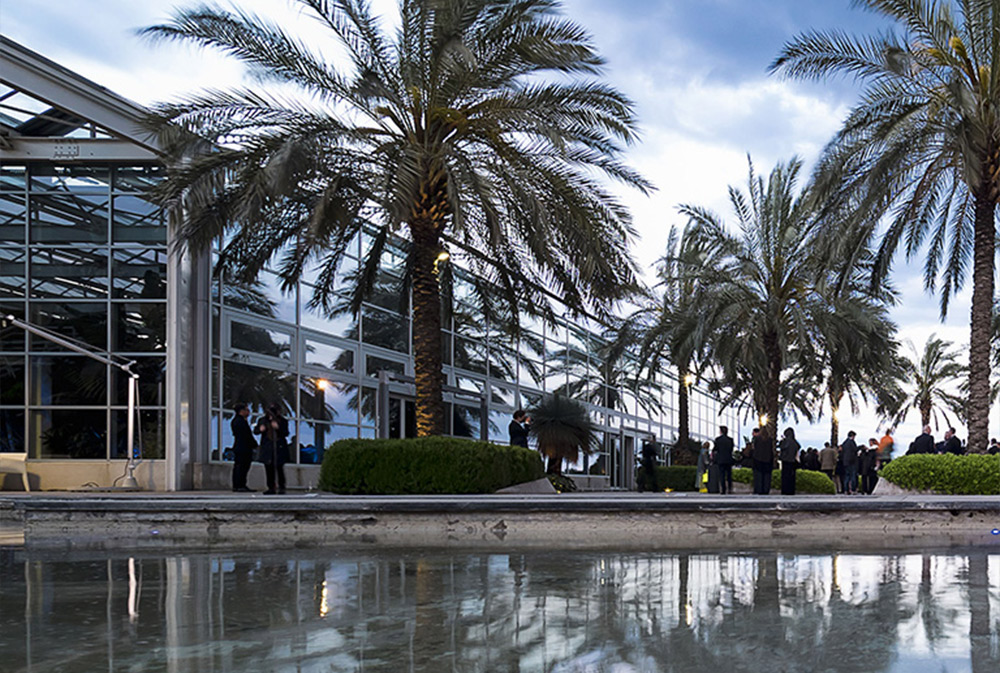
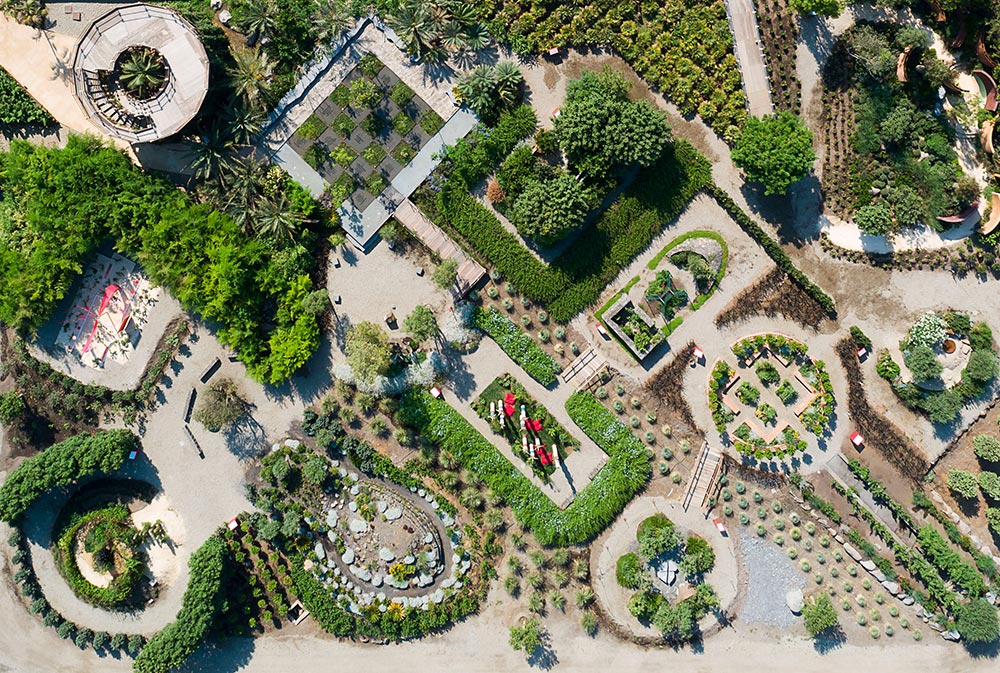
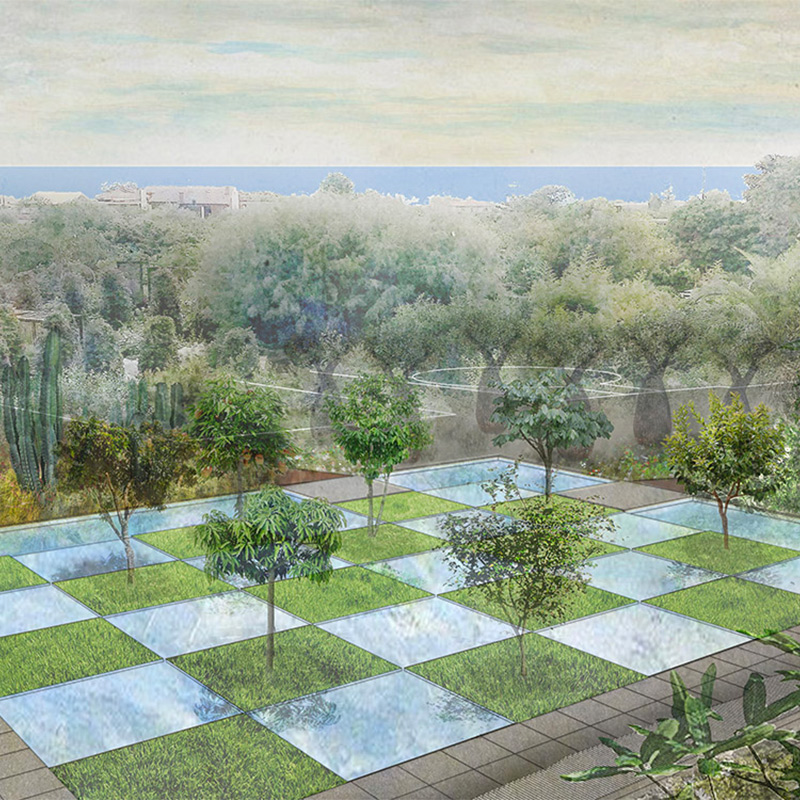
The garden produces the gardener who inhabits it, caresses it, smells it, collects its exotic fruits. “Home ground” is a garden that can shape and take the shape of plants. A central chessboard parterre dictates the rules of a new relationship with nature, the transforming water makes a variation of it. The slightly cut basalt stone is the body of a house that can accommodate. A garden that is flooded, to irrigate or perhaps because it simply wants to change its shape like growing plants: being in the world is being in the sea of the world, a form of immersion. A complex geometry that continuously changes, made of flows that osmotically cross us and which at the same time we invade with waves of variable intensity, in perpetual movement. Photosynthesis is a cosmic process of fluidization of the universe: from solar energy to living matter. In this garden a natural environment is created with the elements that already exist, without discarding anything, through decomposition and reassembling. The project finds its natural place between the ditch and the tower where the dactylifera and the tamarix mark the natural limit of a new garden.
Antonio Perazzi realized the project with the kind collaboration of Gaetano Zoccali e Benedetta Forni.
Collaborated: Silvia Ciacci, Elena Villa, Dalila Nessi, Adriano Fossati.
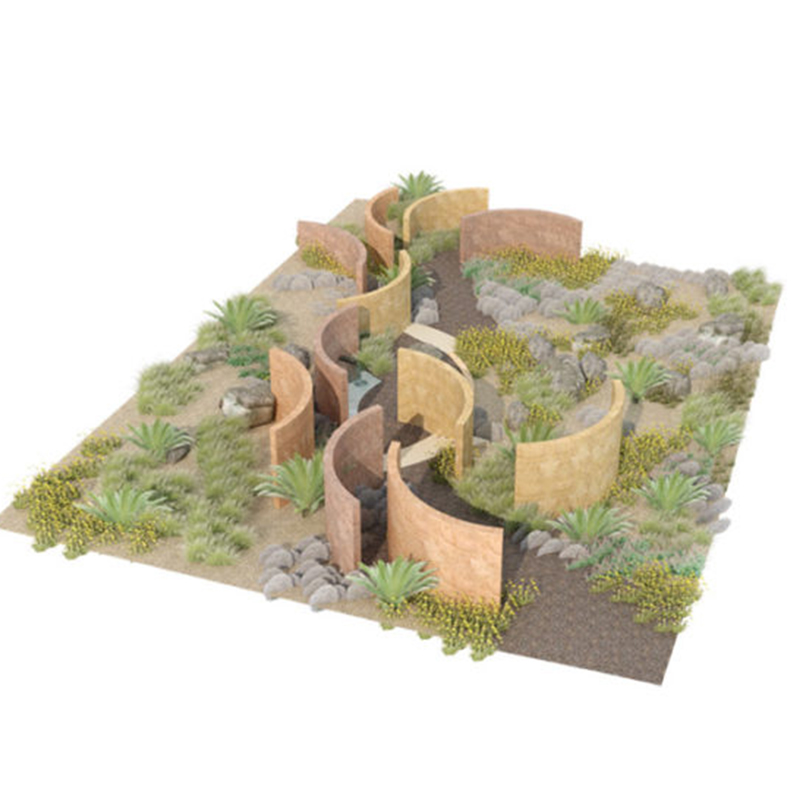
Inspired by the anatomy of plants the curvaceous walls are reminiscent of scattered flowered petals or the fleshy storage scales of an onion bulb that erupts into life when conditions are right. By guiding visitors through the garden, forcing them close up to the sculptural walls and offering them controlled views of productive planting it emphasises man’s irrevocably entwined reliance on plants. Water is essential and sits at the heart of the garden where shade and shelter are provided by trees and the surrounding walls. But this is a layered story with a sub plot: the onion scale walls appear to flow down the slope, acknowledging the presence of Mount Etna above and the larval flows which over the millennia have formed fertile soils allowing crops to flourish. Edible plants and fruits sit in this ornamental garden blurring the lines between formal productive agricultural land and naturalistic landscapes.
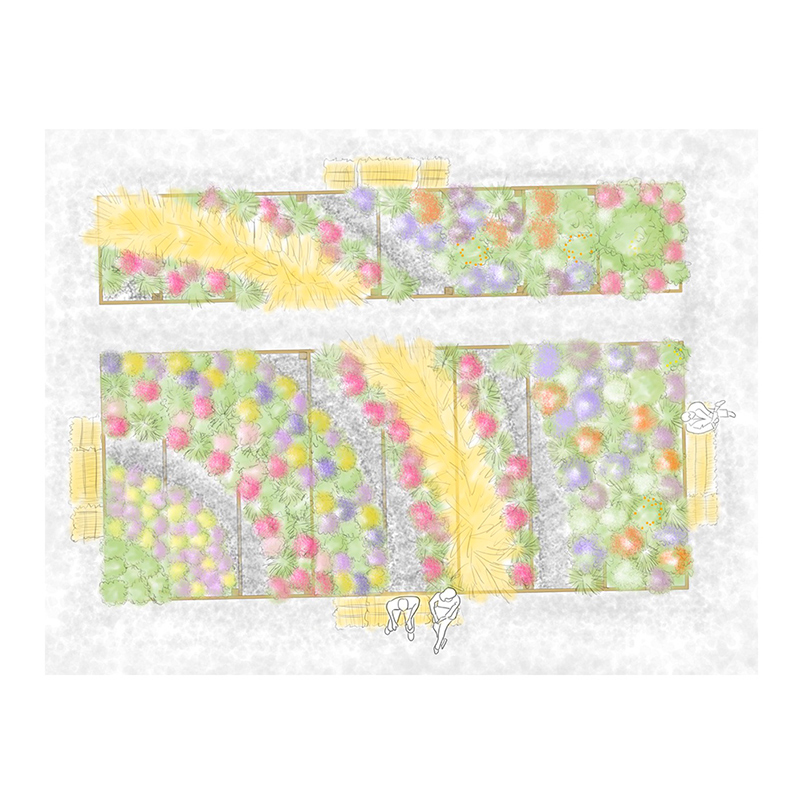
The colourful and perfumed spikes of nectar and officinal plants are dedicated to pollinating insects, so precious for our crops. They are arranged so as to draw a rainbow that will change colour and appearance through the seasons. Flanks of volcanic ash in celebration of Mount Etna – that stands out against the background – alternate with the foliage and the blooms, thus enhancing their colours. The background is a forest of Mediterranean fruit trees and shrubs. The observer will be able to rediscover a garden that, by valuing the past, can nourish the future.
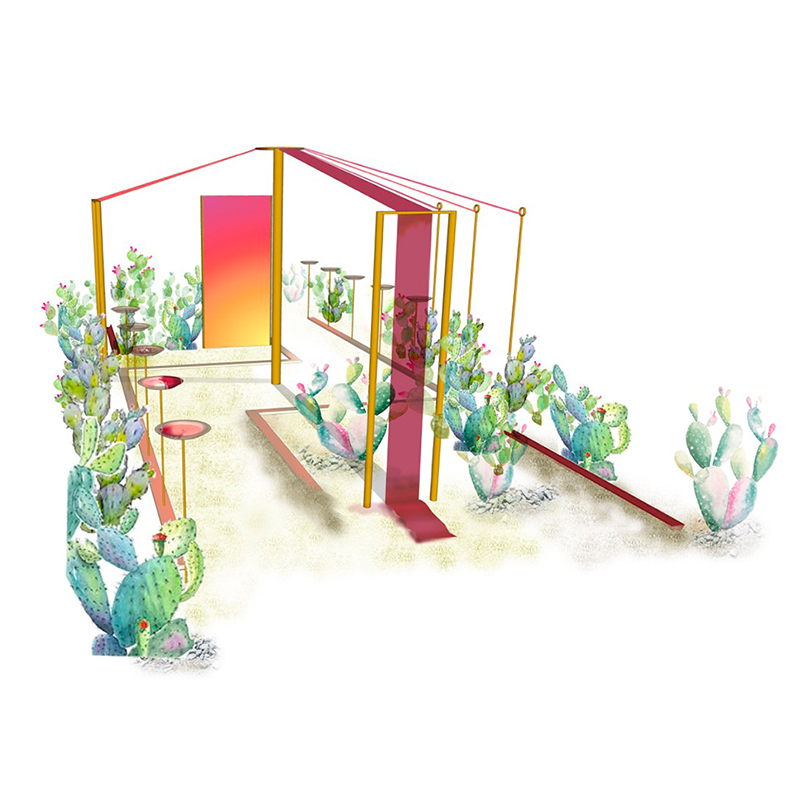
The availability of carmine contributed to materialize the ancestral desire for bold colour, which historically signified power. The structure of the garden invites the visitor to walk through rows of prickly pears, as in an agricultural setting, underneath hanging fabrics inspired by the dyeing process. Next to these, glazed vases in the various shades of red represent the precious ground product and the different nuances obtainable. In this arid environment the carmine red of the bowls reminds us of its value as a resource inviting the visitor to stop and reignite the desire for an element that only by itself already expresses so much strength, in a world where social media culture is flattening our attention.
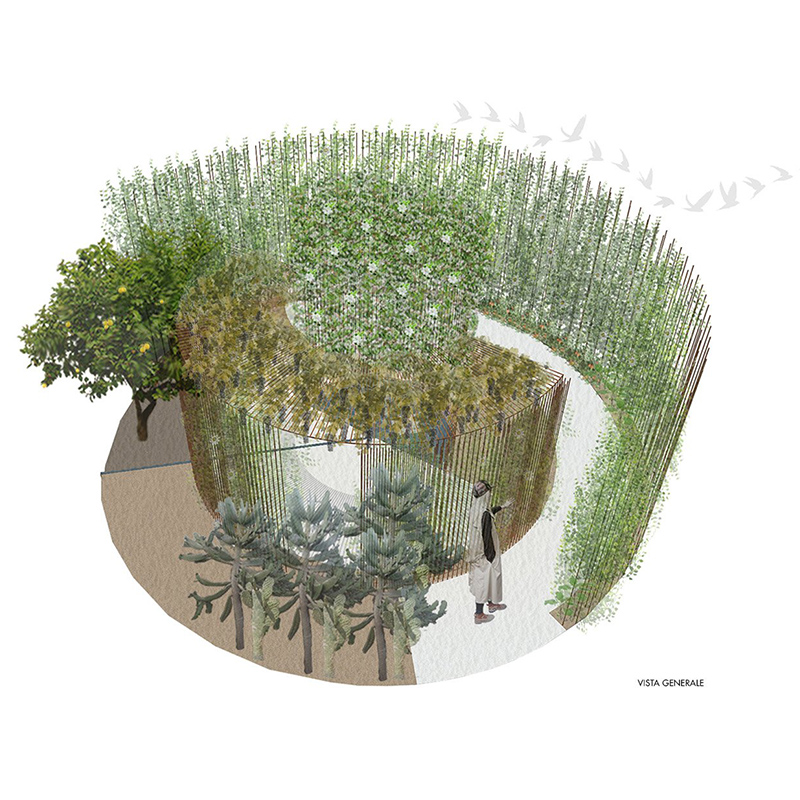
Through the archetypal model of inclusion, the garden protects and preserves an intimate secret that will be revealed only to the most daring traveller. The journey will be the true source of enrichment for the visitor, just like it was for Ulysses.
In this garden the theme of productivity is given two interpretations: on the one hand, while approaching the centre, the visitor will observe the vegetation increase in the proximity of water; on the other hand, he will also experience a production of thoughts and reflections, making an introspective sensory experience. At the end of the path the visitor will find himself on a patch of dry land, transformed both by the saja and by the knowledge gathered during the trip.
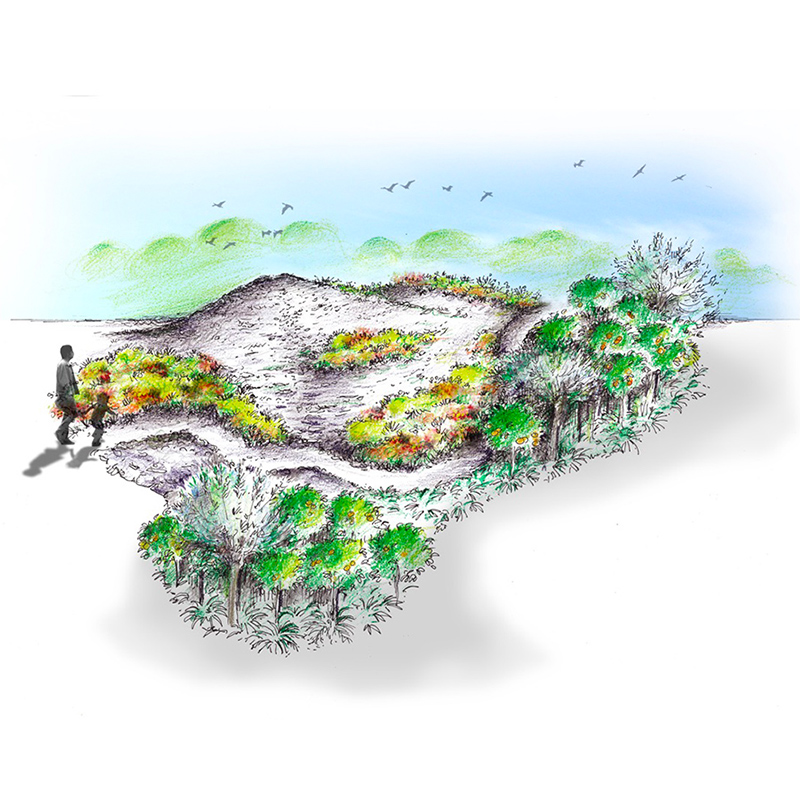
The Garden describes a form of ephemeral brutality by the darkness and incandescence of the matter that it releases, slipping into the woods, obstructing the roads and imposing a new confrontation with nature: in Sicily, the Signora (Mount Etna) redesigns the territories in an unpredictable and perpetual way. However, behind this brutality the volcano fascinates. From this soil it produces new forms, offering this sublime landscape of a rebirthing Nature that adapts to constraint and brings to light some improbable resilient capacities. The Signora designs this vast garden where the blackness of the land contrasts with the colour of the vegetation. It becomes the productive garden of the imagination, an emotion that every hiker embodies during the ascension, motivated by the curiosity to discover the surfacing centre of this disturbing and nourishing matter. It offers man the richness of a productive soil where olives, citrus fruits, pistachios and palm trees find all the necessary resources for their development, thus forming this agricultural landscape. The reduced scale of “The Signora’s Garden” is the occasion of an improbable juxtaposition of two gardens: the one offered by Nature with organic and inspiring forms and the one shaped and structured by the hand of man. Two different expressions of the productive garden with only one point in common: the soil.
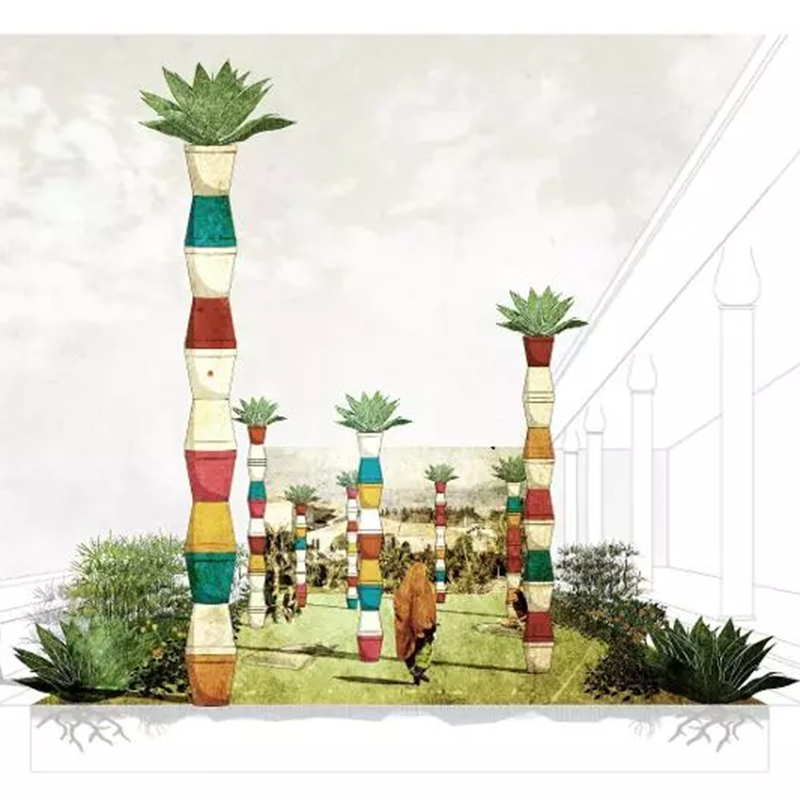
Gardens, on the other hand, only aim to be aesthetically pleasing – their existence is meant to be a gift for the gods. The Babylon gardens were built for Ishtar, goddess of love and war, daughter of the moon and sister to the sun. We often represent those gardens with extreme beauty and exaggerations, forgetting that they were intended to satisfy more rational needs. In ‘The Babylonian Cradle’, pillows welcome you to sit, the perfume of mint makes you eager to drink, papyrus shades your sit and lemons awaken your nostrils. The “palm trees”, ephemeral, remain the only aesthetic luxury in this garden.
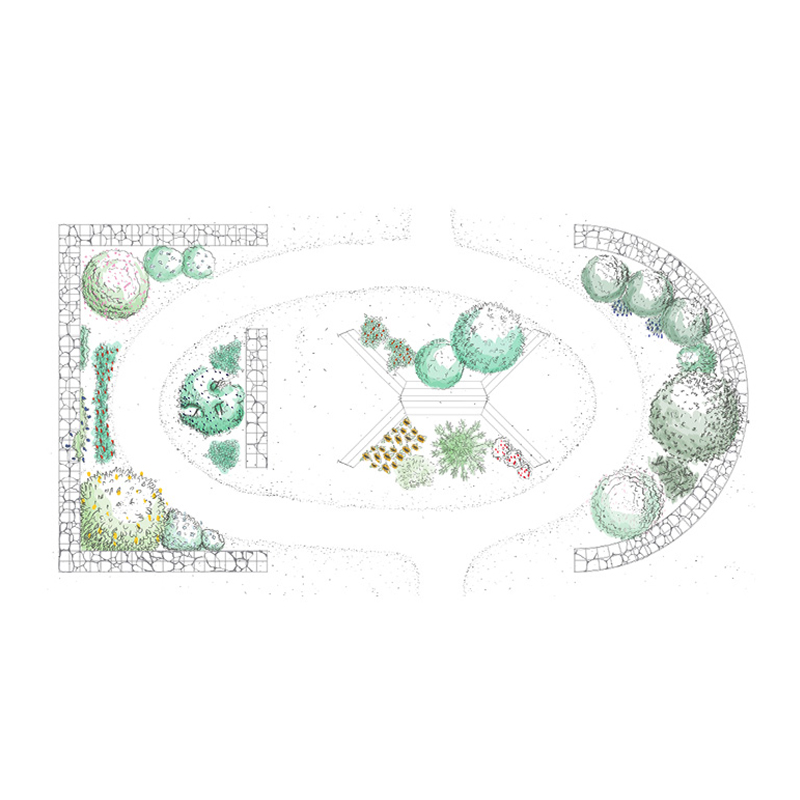
The visitor can wander from the Pantesco garden to the Tu’rat al Warka Water, appreciating both the production of useful plants (edible and officinal from the East, the Mediterranean and the Americas) and the water retrieval techniques revisited and adapted to contemporary needs. An unusual experience, an eco-design that responds to a problem now more than ever relevant, such as water saving. Can a garden produce water? The answer is yes!
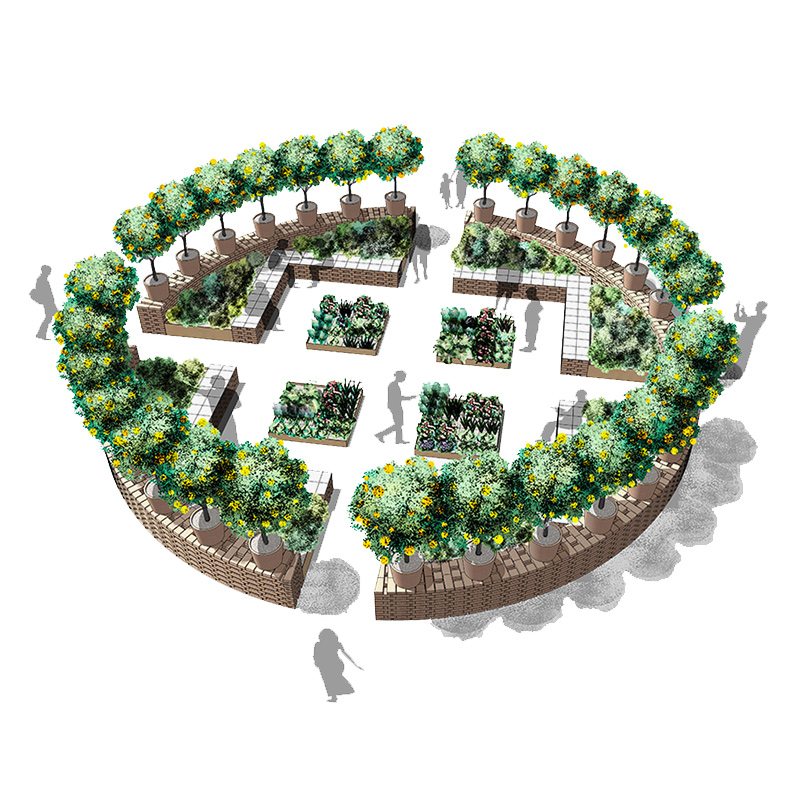
This garden combines Poliphilo’s aesthetic experience with Candide’s ethical purpose. After passing through a ring of citrus fruit trees the visitor finds aromatic Mediterranean plants that provide the link between the circular form and the square seating area, creating a large sociable space, a sort of open-air literary café. In the centre of the garden, plants are cultivated in squared beds following a simple grid layout.
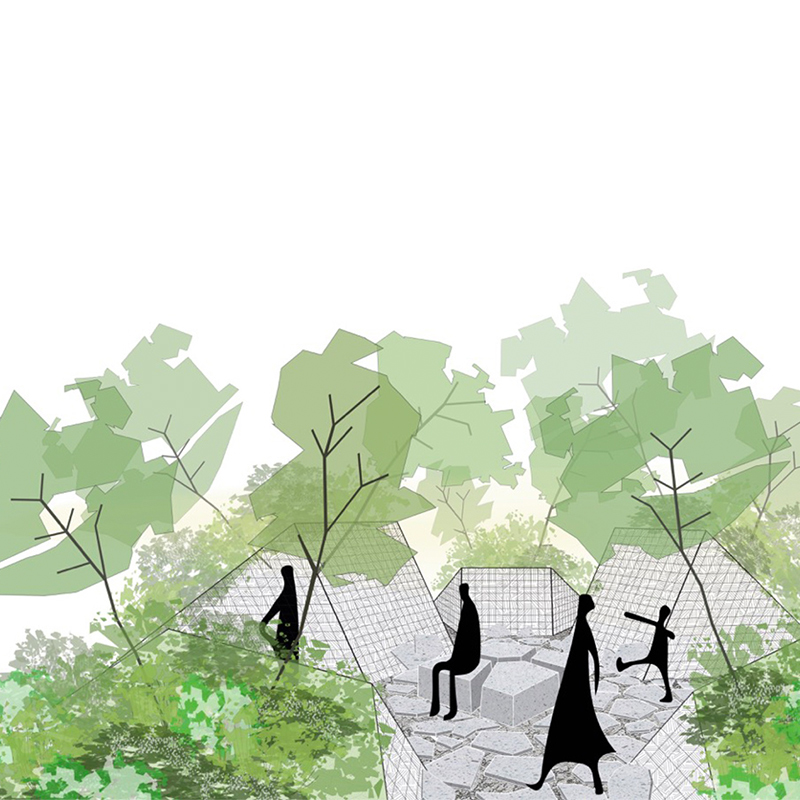
Hence, the idea of designing an unusual productive garden, where the human and the natural environments are compared to show the resilience of plants and the precariousness of the anthropic system. A place where people can walk, sit, and reflect on their lifestyle. Thanks to plants, every garden can produce flowers and fruits, create energy, offer sensory experiences; but nowadays, with humans being the predominant driver of change at a planetary level, we need to generate new thoughts that bring to the awareness that we can still learn much from other living beings, which are probably more ‘sapiens’ than us.
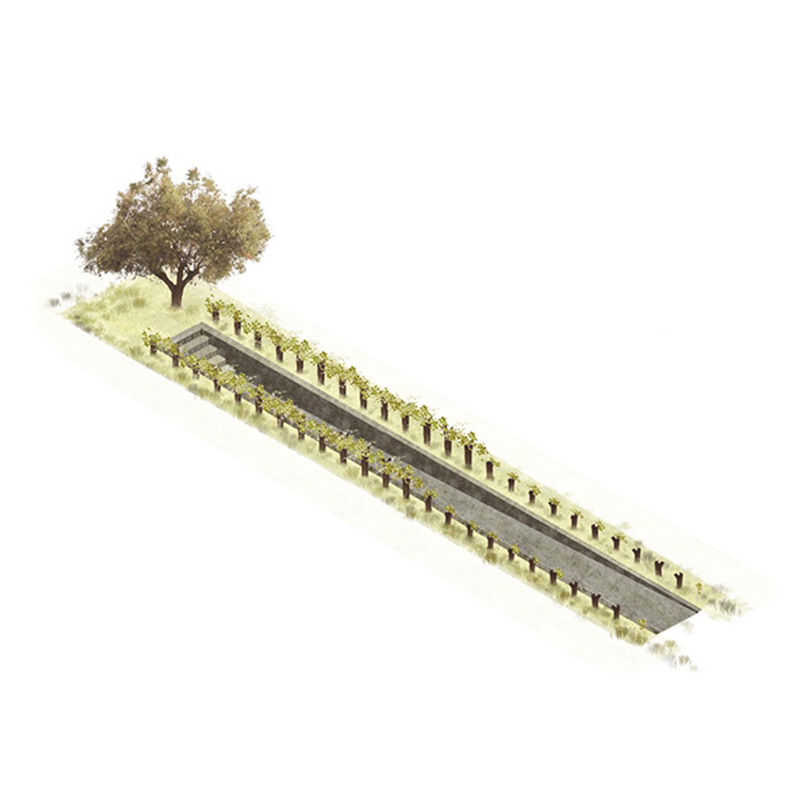
This path suggests wandering between two rows of vines, observing how wine production starts from the seeds to obtain the grapes, thus staging the necessary time in the agricultural process to obtain the final product. At the end of the path, we find shelter: a stair to sit down and an olive tree, which protects us from the sun’s rays on the hottest days of summer. After a long walk we find peace and rest under the shade of a tree. The walk through this garden helps us to admire the beauty of the Mediterranean productive landscape and makes us reflect on the ability of people to transform our landscape.
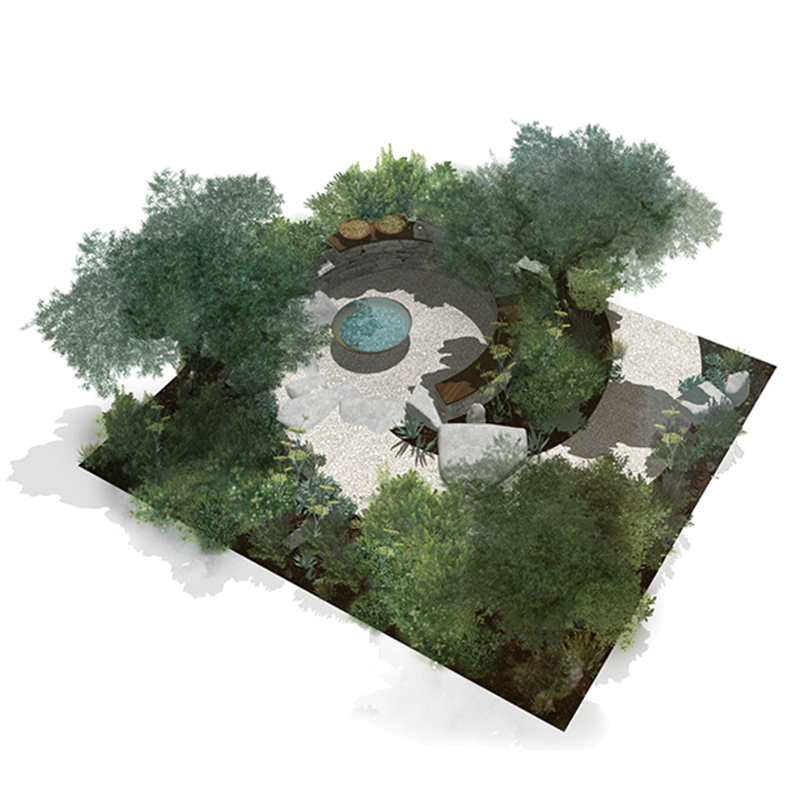
In times when there is a great availability of resources, it is easy to forget the true meaning of well-being. This garden wants to focus precisely on the creation of both physical and mental health. The space develops around a spiral, as a tribute to classical architecture and at the same time to the fractal often found in nature. The curved path merges with the rocky landscape encouraging the visitor to take a slow pace. The plants in this garden have been chosen to stimulate the senses of both sight and smell: from the sculptural olive trees to the aromatic herbs, almost all the selected species have an ancient history linked to medicine, aromatherapy or cosmetics. At the centre of the garden a sitting area invites visitors to relax, while the gentle sound of moving water transports them into a serene meditative state.

